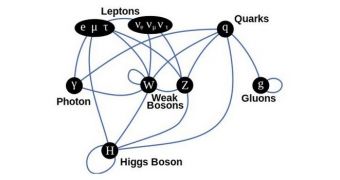Though no one has ever been able to demonstrate this directly, researchers are convinced that particles much smaller than the Higgs boson must exist. Identifying these minute elementary particles will most likely be very difficult, since physicists do not even have the theoretical models needed to inform the development of appropriate detectors.
The existence of such diminutive particles follows from a series of theories related to the Standard Model of Particle Physics, but scientists are still unsure as to how to go about looking for them. A new research demonstrates that the very existence of these particles is now more probable than ever.
In the study, a team of experts led by particle physicist Thomas Ryttov put existing theories to the test. The group was unable to identify any weakness or flaw in these predictions, supporting the idea that their conclusions are correct. Ryttov is an associate professor with the Center for Cosmology and Particle Physics Phenomenology (CP3 – Origins) at the University of Southern Denmark.
Speaking about existing predictions, the expert says: “I gave them a very critical review,” and found that the existence of particles smaller than the Higgs boson in the Universe is very probable. “There seems to be no new or unseen weaknesses. My review just leaves them […] stronger,” he explains.
The idea that previously unknown, low-mass elementary particles may exist throughout the Universe began catching wind over the past decade or so. The main issue plaguing this field of research right from the start is that scientists do not currently have the capabilities that are theoretically required to observe such elementary particles.
“Here at CP3 - Origins, we are interested in the pursuit of such as yet unknown particles. We know that there must be a force that binds them together so that they together can create something bigger than themselves, something composite; a Higgs particle,” Ryttov explains.
“It must happen similarly to quarks binding together to form protons and neutrons. If we can understand this force, we can explain and predict new physical phenomena like new particles,” he adds, quoted by Space Daily.
The expert and his team propose the term techni-quarks for the new particles, which may in essence become extensions of the Standard Model in the near future. The group says that more work needs to be done to understand the strong nuclear force – one of the four main forces in the Model – before such in-depth studies are conducted.
The three generations of quarks and leptons in the Standard Model, alongside the five force carriers, are believed to represent the basic building blocks of the Universe. Their existence and interactions explain everything we observe around us in the Cosmos.

 14 DAY TRIAL //
14 DAY TRIAL //